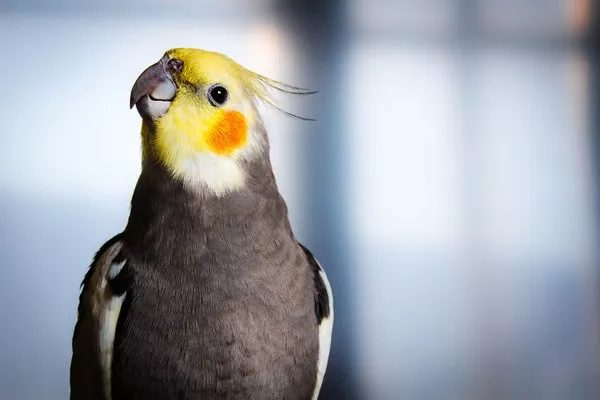Corn snakes (Pantherophis guttatus) are one of the most popular pet snakes in the world due to their friendly temperament, beautiful color patterns, and ease of care. As a reptile, a corn snake‘s environment plays a crucial role in its health and well-being. One of the most important factors to consider when setting up a corn snake habitat is the temperature. Without the right temperature, your corn snake could become stressed, sick, or even die. So, what temperature should a corn snake tank be?
In this article, we’ll dive into the details of proper temperature requirements for your corn snake’s tank, why temperature matters, how to regulate it, and tips on creating the best habitat for your pet.
1. Understanding the Corn Snake’s Natural Habitat
Corn snakes are native to the southeastern United States, ranging from southern New Jersey to Florida and as far west as eastern Texas. Their natural habitat consists of forests, fields, and grasslands, often in areas with mild to warm temperatures. Corn snakes are nocturnal, meaning they are most active at night when temperatures are cooler, but they still need access to warmth during the day for basking and digesting food.
To provide the best environment for your pet corn snake, it’s important to mimic the conditions of their native habitat. The temperature in their tank should reflect both the cool and warm areas that a corn snake would naturally encounter.
2. Ideal Temperature Ranges for a Corn Snake Tank
The ideal temperature range for a corn snake tank varies depending on whether the snake is active or resting. Corn snakes are ectothermic, meaning they rely on external heat sources to regulate their body temperature. This means that you must provide them with both a warm and a cool side in their tank to help them thermoregulate.
Basking Area Temperature
The basking area should be the warmest part of the tank. This area should have a temperature of 85-90°F (29-32°C) during the day. This is where the corn snake will go to raise its body temperature when it’s feeling too cold. A basking spot can be created using heat lamps or heat mats, which we’ll discuss in more detail later.
Cool Side Temperature
On the opposite side of the tank, you should provide a cooler area. The cool side temperature should range between 70-75°F (21-24°C). This cooler area allows the snake to cool down when it gets too warm from basking. The cool side is equally important because it offers a place for the snake to escape the heat and maintain a balanced body temperature.
Nighttime Temperature
At night, the temperature in the tank should drop slightly, but it shouldn’t go below 65°F (18°C). While corn snakes can tolerate lower temperatures, they should not be exposed to extreme cold for extended periods of time, as it can cause metabolic issues and lower their immune system. Therefore, ensure that the tank doesn’t dip below the 65°F mark overnight.
Ambient Temperature Range
Overall, the ambient temperature in the tank should range between 75-80°F (24-27°C) during the daytime when the snake is not basking. This temperature range helps maintain a comfortable environment for your corn snake when it is not actively seeking heat.
3. Why Temperature Is Crucial for Corn Snakes
Temperature plays an essential role in the overall health of corn snakes. Since they are ectothermic animals, they rely on external temperatures to regulate their bodily functions. A snake’s body temperature influences its digestion, immune function, activity levels, and even its metabolism.
Digestion: Corn snakes need heat to properly digest their food. When they are not exposed to the right temperatures, their digestion slows down, which can lead to health problems like regurgitation, malnutrition, or even impaction.
Activity: A corn snake that is too cold will become sluggish and less active. On the other hand, if it’s too hot, it may overheat, leading to stress and dehydration.
Reproductive Health: Temperature plays a key role in the reproduction of corn snakes. Breeding often occurs during specific seasonal temperature changes, and improper temperature control can affect the snake’s reproductive cycles.
Immune System: Maintaining the right temperature helps keep a corn snake’s immune system functioning optimally. A snake exposed to fluctuating or incorrect temperatures is more susceptible to infections and illnesses.
4. Setting Up a Proper Temperature Gradient
To achieve the correct temperature for your corn snake, it’s crucial to set up a temperature gradient. A temperature gradient allows the snake to move between areas of different temperatures, enabling it to regulate its body heat as needed.
Use of Heat Sources
Heat Lamps: Heat lamps are a common way to create a basking area for corn snakes. These lamps emit both light and heat, helping to raise the temperature in one area of the tank. It’s important to choose a heat lamp that doesn’t produce excessive heat or direct light that could stress your snake. An incandescent bulb or a ceramic heat emitter works well for this purpose.
Heat Mats: Heat mats are another option for creating a warm area. These mats can be placed underneath the tank, providing heat from the bottom. However, heat mats should be used with caution, as they can overheat if not properly regulated. A thermostat is recommended to ensure that the heat mat maintains a consistent and safe temperature.
Undertank Heaters (UTH): An undertank heater is a type of heat mat that is placed underneath the tank. It provides heat from below and is often used to create the warm side of the temperature gradient. Make sure the mat covers only a portion of the tank to allow for a cool side for the snake to retreat to.
Ceramic Heat Emitters (CHE): These emitters provide heat without light, making them perfect for nighttime heating when you want to avoid disrupting your snake’s natural sleep cycle. They are more energy-efficient and produce consistent heat.
Using Thermostats
Using thermostats is essential to regulate the temperature in your corn snake’s tank. A thermostat connected to your heat source will help maintain a stable temperature and prevent overheating. It also helps to keep the tank within the recommended temperature range for both day and night.
5. Monitoring the Temperature
It’s essential to constantly monitor the temperature in your corn snake’s tank to ensure it stays within the desired range. A temperature spike or drop can quickly stress your snake and lead to health issues.
Thermometers
You should use both a digital thermometer and a stick-on thermometer to monitor the temperature on both the warm and cool sides of the tank. Place the digital thermometer near the basking area, and use the stick-on thermometer on the cool side of the tank. Digital thermometers tend to be more accurate, but stick-on thermometers are useful for quickly checking temperatures.
Temperature Ranges to Track
You should track the temperature during the day and night. Make sure the basking area stays between 85-90°F (29-32°C) during the day, and the cool side stays between 70-75°F (21-24°C). During the night, ensure that the temperature does not drop below 65°F (18°C).
Humidity Considerations
In addition to temperature, humidity levels also play a role in your snake’s environment. Corn snakes prefer a humidity range of 40-60%. Humidity can be regulated through misting or using a humidifier if the air in the room is very dry.
6. Seasonal Adjustments
As the seasons change, so do the temperatures in your home. You may need to adjust your heat sources to accommodate for seasonal temperature changes. In the winter, when the ambient room temperature drops, you may need to increase the heat in the tank to ensure that the snake remains comfortable.
In the summer, be cautious not to overheat the tank. Excess heat can lead to overheating, dehydration, and stress for your corn snake. A well-maintained temperature gradient will help balance the temperature in the tank, even as external temperatures fluctuate.
7. What Happens If the Temperature Is Too High or Too Low?
Both extreme heat and cold can be harmful to your corn snake’s health.
Too High Temperatures: If the tank is too hot, your corn snake will become stressed and may exhibit signs of overheating, such as increased activity, seeking out cooler areas, or even attempting to escape the tank. Prolonged exposure to high temperatures can lead to heatstroke, dehydration, and even death. Overheating can also impact digestion and make the snake less likely to eat.
Too Low Temperatures: If the temperature is too low, your snake will become lethargic and may stop eating altogether. In extreme cases, prolonged cold exposure can lead to a decrease in metabolic function, respiratory infections, or even death. It’s crucial to avoid keeping your corn snake in temperatures below 65°F (18°C) for extended periods.
Conclusion
Providing the right temperature for your corn snake is one of the most important aspects of caring for it. The temperature gradient, with a basking area, cooler areas, and proper nighttime temperatures, ensures that your snake can regulate its body temperature and stay healthy.
By using the proper heat sources, monitoring the temperature carefully, and making adjustments as needed, you’ll be able to create the ideal environment for your corn snake to thrive. Keeping your snake’s tank at the proper temperature not only helps with its digestion and activity levels but also supports its immune system and overall well-being.
A well-maintained tank with the correct temperature will ensure that your corn snake stays happy, healthy, and comfortable, allowing you to enjoy your pet for years to come.
Related Topics:
























